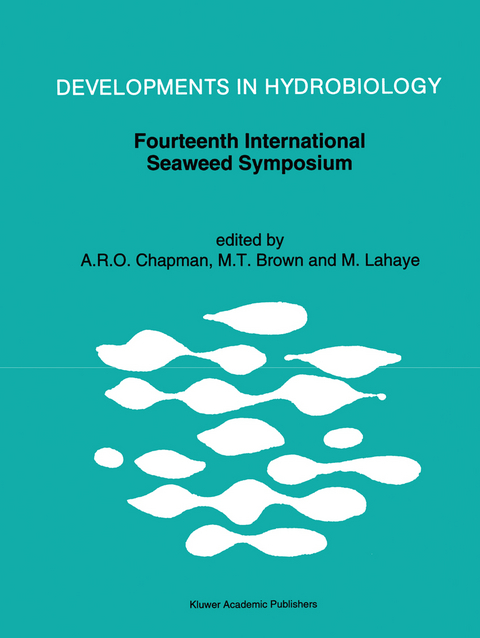
Fourteenth International Seaweed Symposium
Proceedings of the Fourteenth International Seaweed Symposium held in Brest, France, August 16–21, 1992
Seiten
1993
|
Reprinted from HYDROBIOLOGIA, 260/261, 1993
Springer (Verlag)
978-0-7923-2309-9 (ISBN)
Springer (Verlag)
978-0-7923-2309-9 (ISBN)
A new generation of biologically-based management models is gradually incorporating field testing, concepts from ecological theory and principles from population biology. New, biologically active compounds are being described, obtained from algae, and new tools for the characterisation of phytocolloids are described.
Industrial seaweed use started in Brittany in the XVII century. Today, 700 species have been identified along 1000 km of shoreline, producing 10 million tons of biomass. In the Fourteenth International Seaweed Sumposium the latest developments in the area are discussed. The blending of molecular biology with traditional taxonomy is improving our understanding of phylogeny and species relationships among many of the important algae. A new generation of biologically-based management models is gradually incorporating field testing, concepts from ecological theory and principles from population biology. Prediction is being improved, and an appropriate balance is being struck between commercial exploitation and the preservation of wild seaweed resources. Cell and tissue culture of seaweeds is entering the mass-production phase. Field farming is now entering the large-scale production area. New, biologically active compounds are being described, obtained from algae, and new tools for the characterisation of phytocolloids are described. Microalgal blooms and toxins are also experiencing a flourish of new results.
Industrial seaweed use started in Brittany in the XVII century. Today, 700 species have been identified along 1000 km of shoreline, producing 10 million tons of biomass. In the Fourteenth International Seaweed Sumposium the latest developments in the area are discussed. The blending of molecular biology with traditional taxonomy is improving our understanding of phylogeny and species relationships among many of the important algae. A new generation of biologically-based management models is gradually incorporating field testing, concepts from ecological theory and principles from population biology. Prediction is being improved, and an appropriate balance is being struck between commercial exploitation and the preservation of wild seaweed resources. Cell and tissue culture of seaweeds is entering the mass-production phase. Field farming is now entering the large-scale production area. New, biologically active compounds are being described, obtained from algae, and new tools for the characterisation of phytocolloids are described. Microalgal blooms and toxins are also experiencing a flourish of new results.
1. Plenary lectures.- 2. Taxonomy and general biology.- 3. Ecology.- 4. Resources.- 5. Cultivation, tissue culture.- 6. Physiology.- 7. Chemical composition.- 8. Chemical structure.- 9. Molecular biology.- Chemical components index.- Taxonomic index.- Author index.
| Erscheint lt. Verlag | 31.7.1993 |
|---|---|
| Reihe/Serie | Developments in Hydrobiology ; 85 |
| Zusatzinfo | XLVIII, 726 p. |
| Verlagsort | Dordrecht |
| Sprache | englisch |
| Maße | 210 x 279 mm |
| Themenwelt | Naturwissenschaften ► Biologie ► Botanik |
| Naturwissenschaften ► Biologie ► Limnologie / Meeresbiologie | |
| Naturwissenschaften ► Biologie ► Mikrobiologie / Immunologie | |
| Naturwissenschaften ► Biologie ► Ökologie / Naturschutz | |
| ISBN-10 | 0-7923-2309-2 / 0792323092 |
| ISBN-13 | 978-0-7923-2309-9 / 9780792323099 |
| Zustand | Neuware |
| Haben Sie eine Frage zum Produkt? |
Mehr entdecken
aus dem Bereich
aus dem Bereich
Gefäßpflanzen: Grundband
Buch | Hardcover (2021)
Springer Spektrum (Verlag)
CHF 62,95
ein Baum erzählt seine erstaunliche Geschichte
Buch | Hardcover (2024)
Ludwig (Verlag)
CHF 32,15
Buch | Hardcover (2021)
Springer (Verlag)
CHF 125,95


